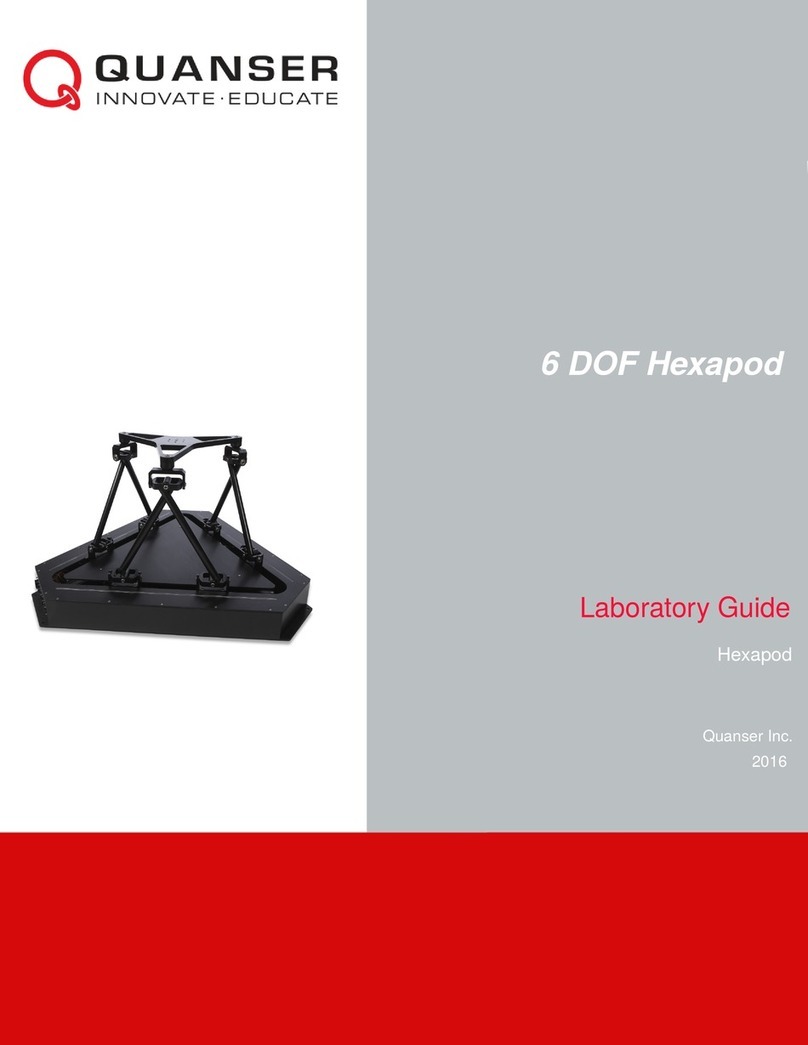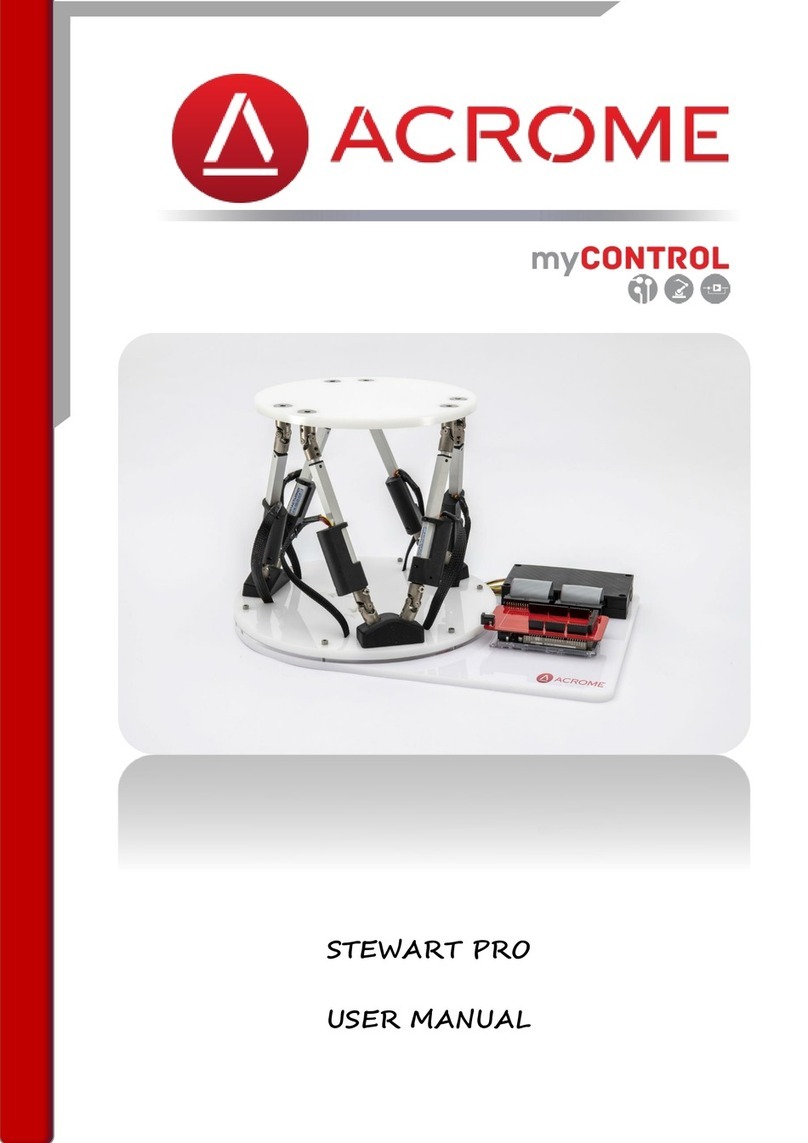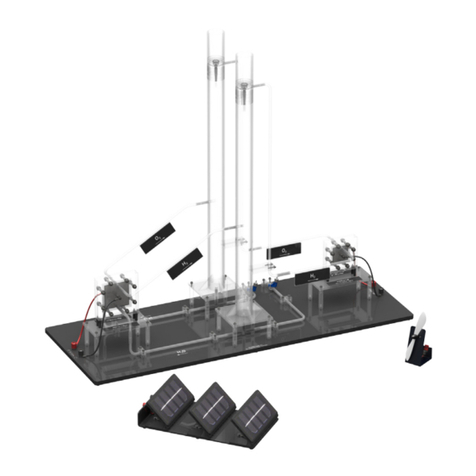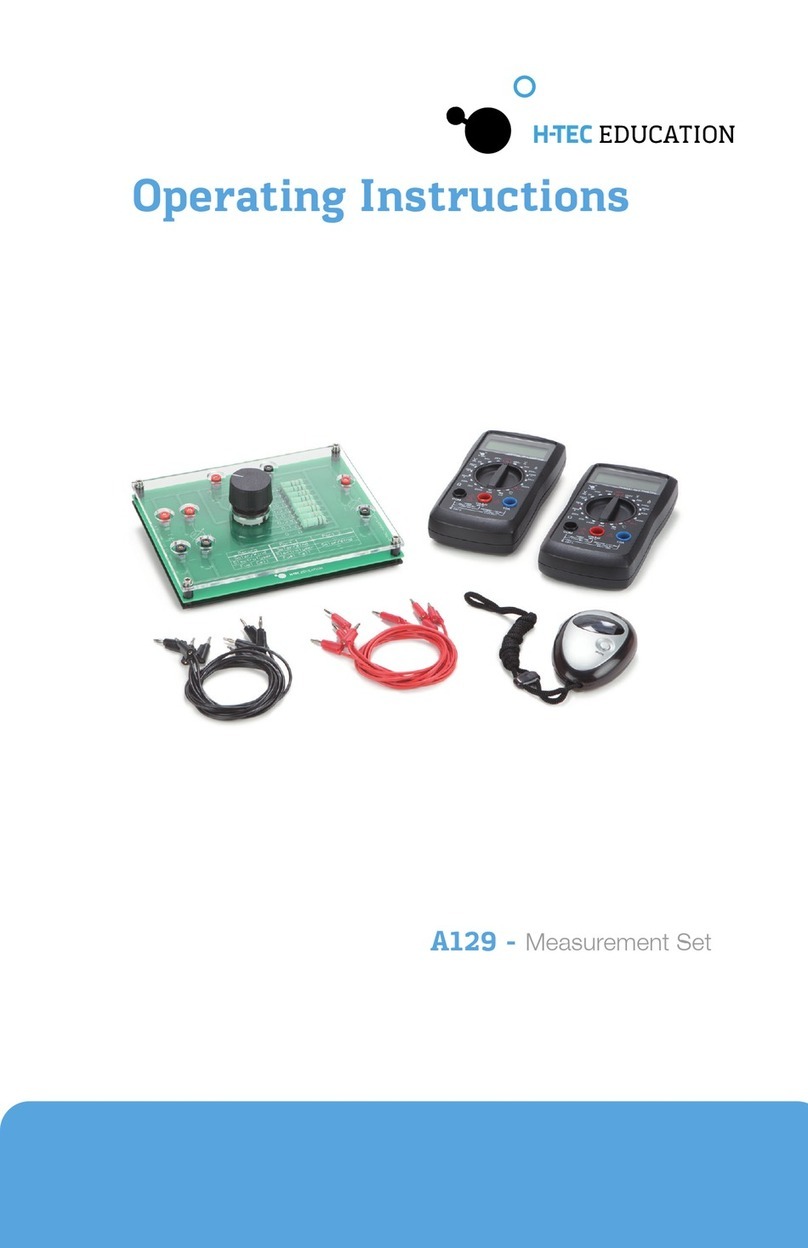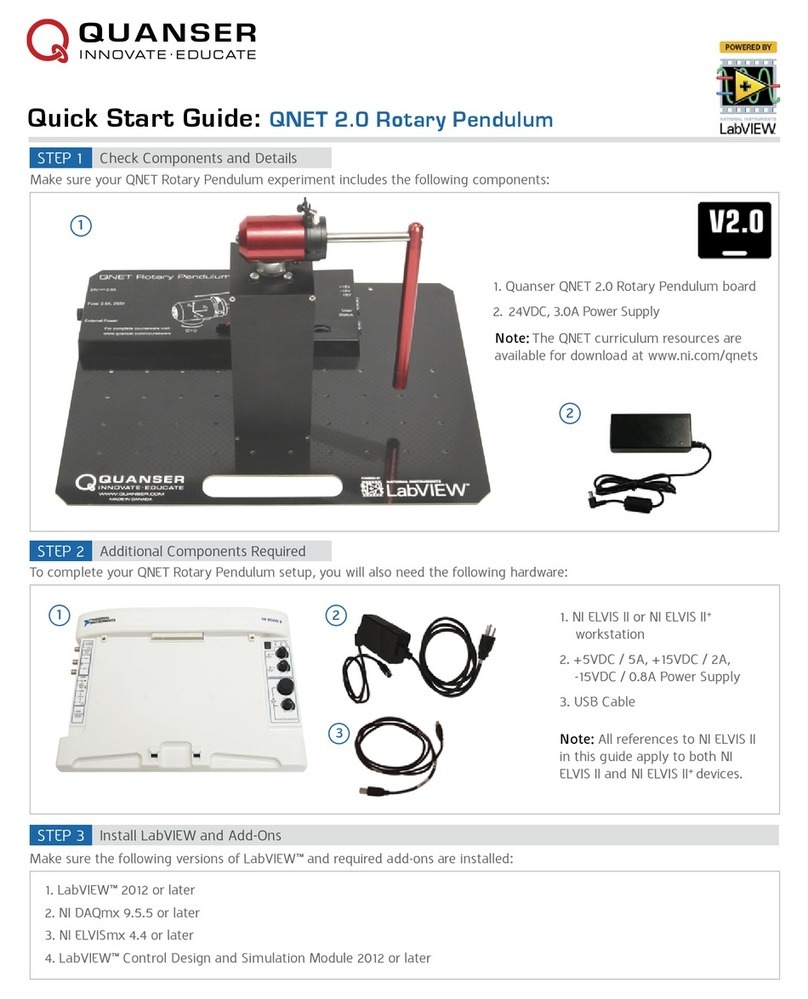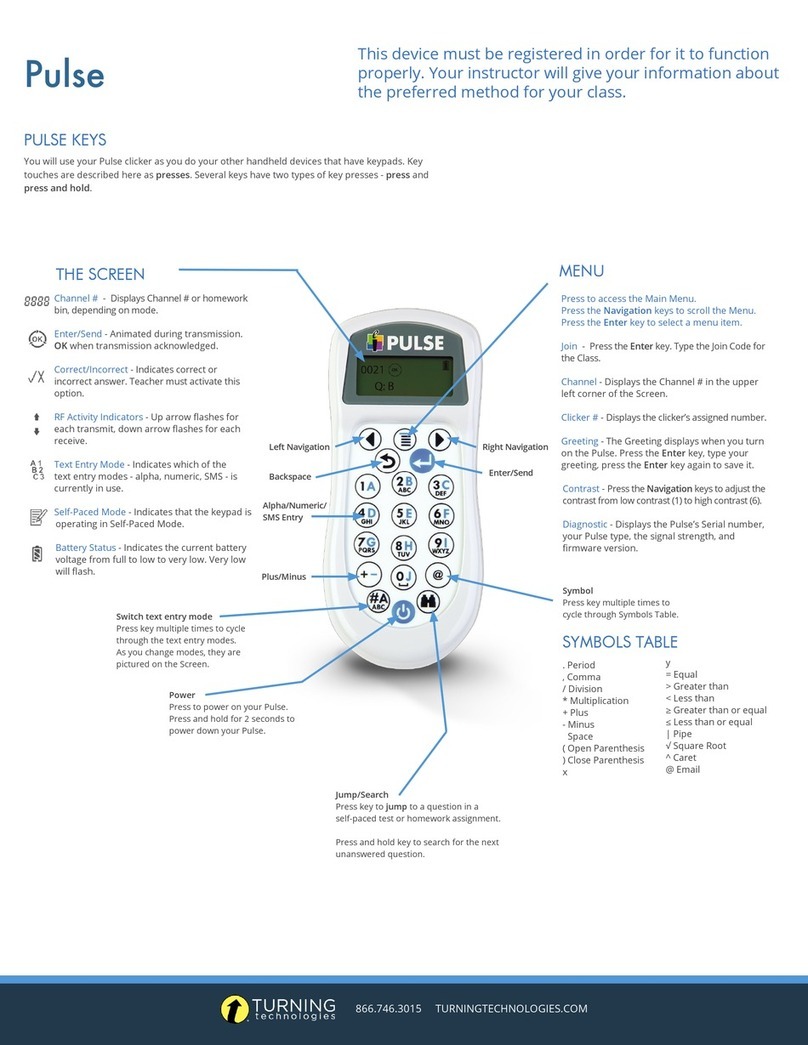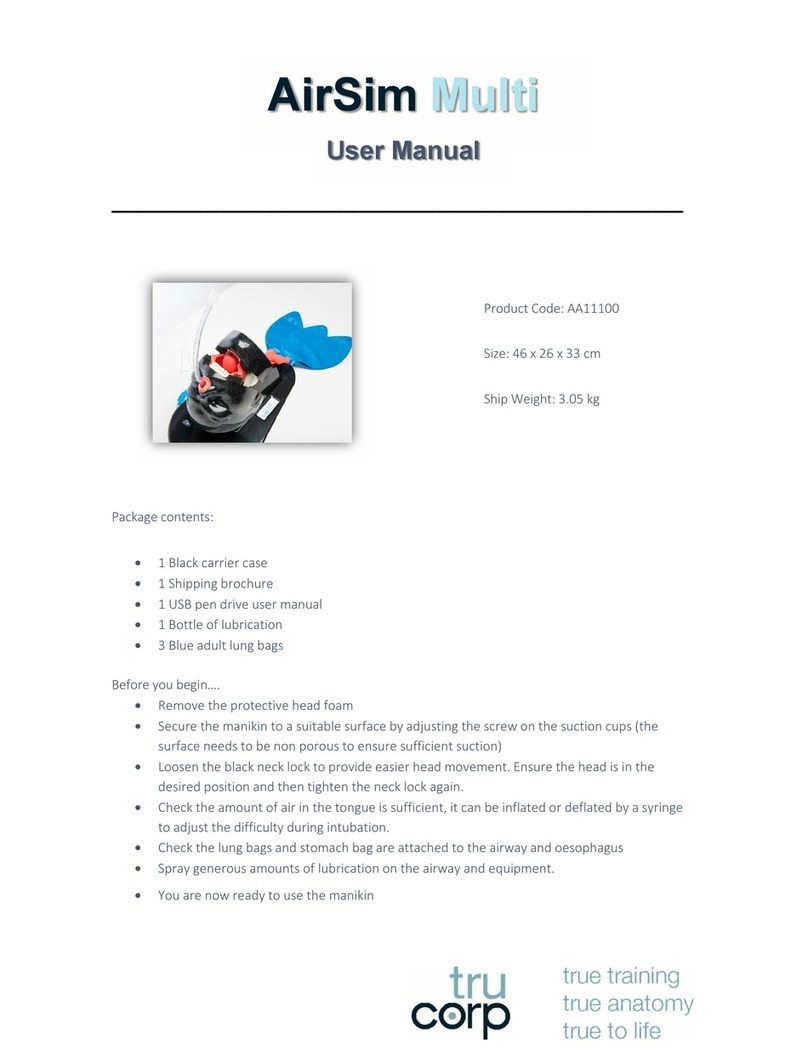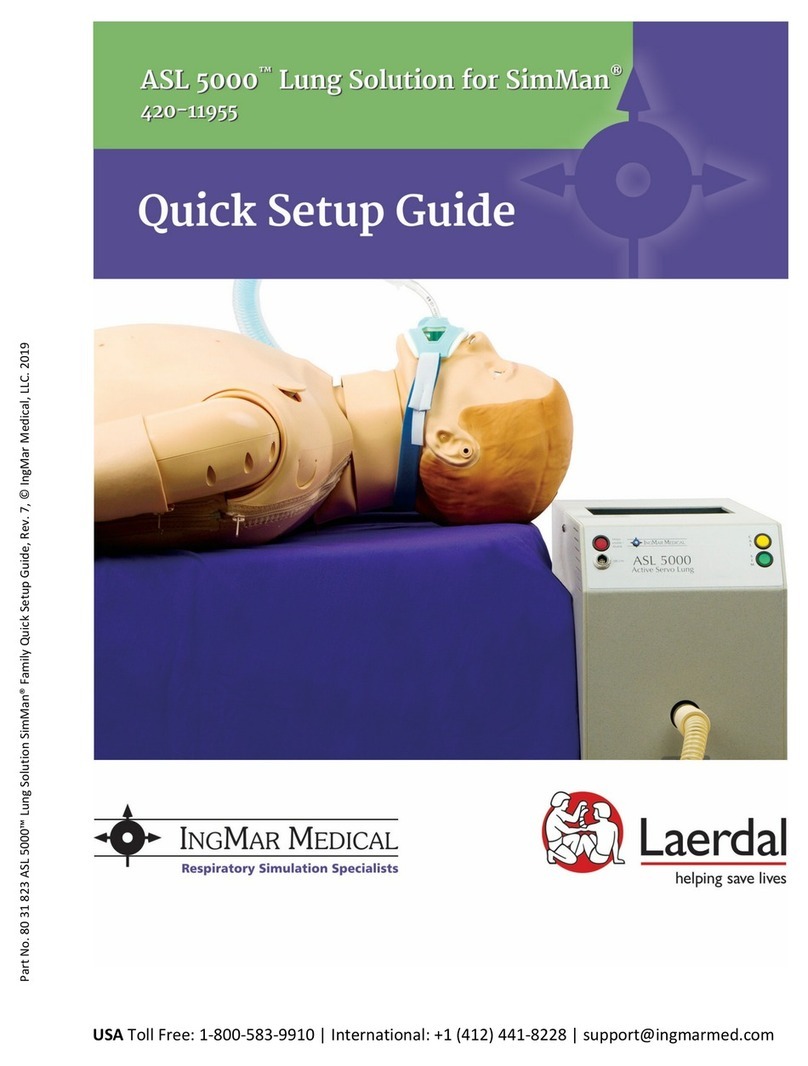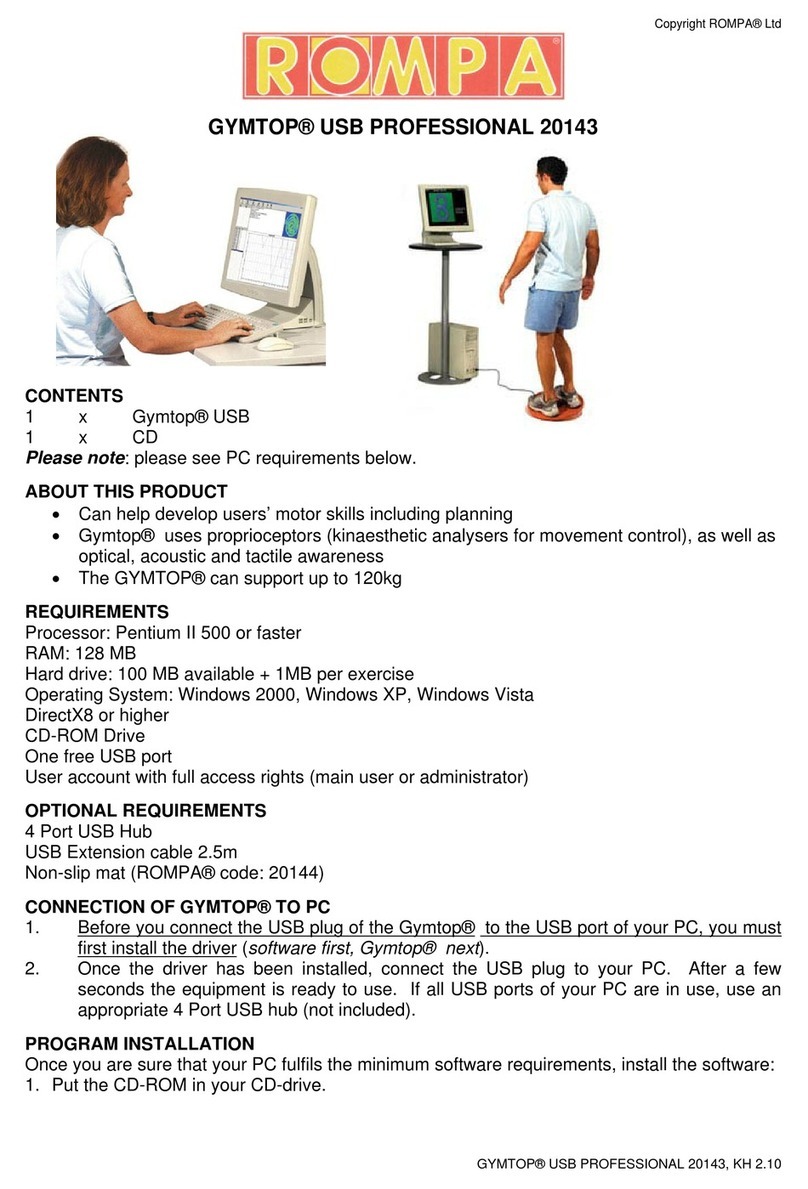
www.myhtec.com 5
• The system is intended for teaching
and demonstration purposes in schools,
universities, institutions and companies
only.
• It may only be set up and operated by a
competent person.
• Read the Operating Instructions before
setting up the PEMFC Kit. Follow them
during use and keep them readily
available for reference.
• Wear protective goggles.
• Remove inflammable gases, vapors and
fluids from the vicinity of fuel cells and
electrolyzers. The catalysts contained
in the system can trigger spontaneous
combustion.
• Hydrogen and oxygen may
escape from the system. To
prevent the gases collecting
and forming explosive
mixtures only use the
system in well-ventilated rooms.
• Hoses, plugs and tanks are used for
pressure compensation. They must
not be fixed or secured with clamps,
adhesive, etc.
General Safety Precautions
• The system is not a toy. Operate the
PEMFC Kit and keep it and the gases
produced out of the reach of small
children.
• Unless specified otherwise, do not
short-circuit or reverse the polarity of the
terminals.
• Do not operate the system dry. Always
ensure that it contains sufficient water.
• The system may only be operated in
a display case, which is sufficiently
ventilated at all times. The operator
is obliged to prove this by means of
appropriate measurements.
• Do not smoke.
• Only use the gas storage tanks belonging
to or supplied with the system to store
gas. Never connect other alternatives.
• Only operate the system at room
temperature and ambient pressure.
